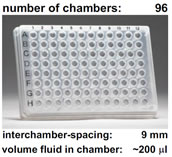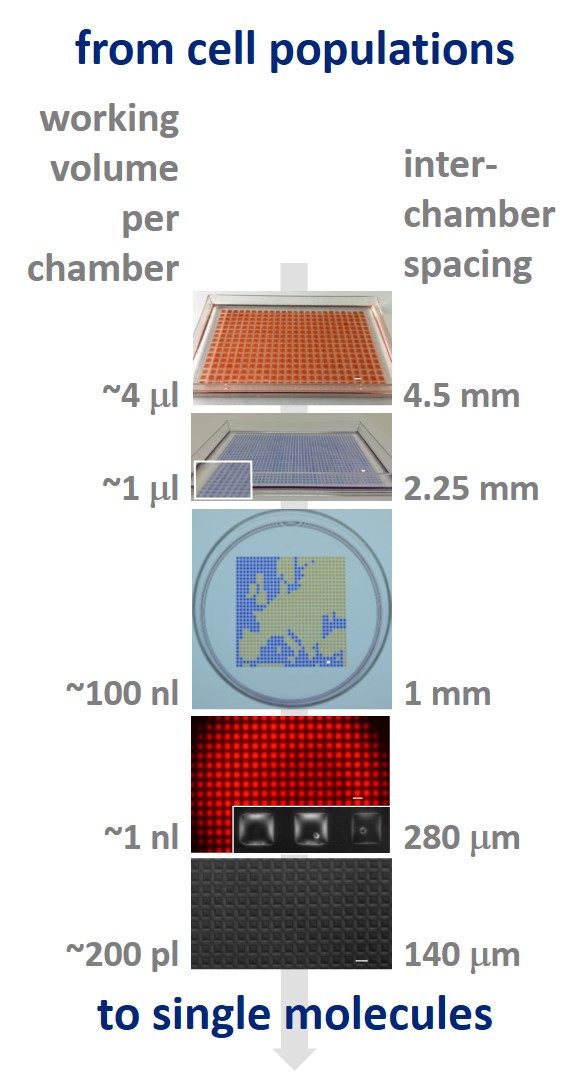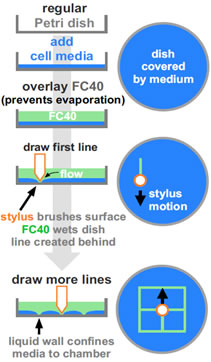Conventional microtiter plates v GRIDs |
|
| Microtiter plates are widely used during liquid handling; each is essentially an array of miniature test tubes with 96 (right), 384, or 1,536 wells in a uniform rectangular footprint, where wells have working volumes of ~100-400, ~15-50, or ~3-10 micro-liters, respectively. |  |
Biologists can make GRIDs with their own media, plates, coatings (important when growing fastidious iPS cells, organs), and use nano-liter volumes rather than the tens of micro-liters consumed in microplates. Many workflows in cell biology (e.g., feeding, replating, cloning, cryopreservation, lysis + RT-PCR, transfection + genome editing, and fixation + immunolabeling) have been carried out in GRIDs.
|
 |
| Fabrication of GRIDs with fluid walls | |
| GRIDs are fabricated differently from our circuits by reshaping fluids sitting in a standard Petri dish (right): • The bottom is covered with a thin film of cell-growth medium. • An overlay of an immiscible liquid (FC40) prevents evaporation. • A Teflon “stylus” moves along the bottom. As FC40 wets stylus and dish better than media, FC40 runs down to the bottom. • Moving the stylus sideways draws a line. • Drawing more lines creates a GRID; neighbouring aqueous chambers are separated by 'liquid walls' of FC40. The sides of each wall are firmly 'pinned' to the dish by interfacial forces (background). These fluid walls prove to be remarkably robust, withstanding violent agitation (Movie). |
 |
| Some movies Movie: Printing a GRID with fluid walls in seconds Movie: Adding fluid through a liquid bridge to a chamber with fluid walls Movie: Adding small volumes quickly to micro-chambers with fluid walls Movie: A GRID containing with fluid walls survives violent agitation Movie: Worms living in a GRID with fluid walls |
|
Reference |
|
Nuclear Structure and Function Research Group |
 |
||
GRIDs (for static apps) |
|||
Top | Home | Maintained by Peter Cook | |
|||
![Transcription factories in a Hela cell [from Cook PR (1999) Science 284, 1790]](../images/pombo.png)